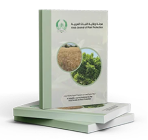P.S.A. Bebane
Department of Medical Laboratory Science, College of Science, Charmo University, Kurdistan Region, Iraq.
Email address of the corresponding author: [email protected]
Pages 38-45
A Regional Scientific Journal Published Four Times a Year by the Arab Society for Plant Protection


P.S.A. Bebane
Department of Medical Laboratory Science, College of Science, Charmo University, Kurdistan Region, Iraq.
Email address of the corresponding author: [email protected]
Pages 38-45
Honeybee, is essential to both the preservation of biodiversity and the security of the world’s food supply. Identifying genetic variation is a crucial step in preserving diversity. The current study used thirteen mitochondrial coding protein genes to characterize molecular genetic variation among populations of five Apis mellifera subspecies. The results obtained showed that the populations of both subspecies, Apis mellifera mellifera and Apis mellifera jemenitica, had a higher mean in genetic diversity features such as nucleotide diversity, the number of pairwise differences, and polymorphic sites. While the Apis mellifera ligustica subspecies population had the lowest mean of the same parameters. The patterns of genetic differentiation and gene flow revealed that Apis mellifera scutellate, Apis mellifera capensis, and Apis mellifera mellifera populations were the most closely related in terms of their mitogenomic sequences, whereas Apis mellifera jemenitica and Apis mellifera ligustica populations were the most distant mitogenomically within and between populations. Phylogeny, PCA, and haplotype network analysis revealed that some individuals in different subspecies had the same haplotypes. These findings imply that the genetic integrity of native honeybees is threatened as individuals from several subspecies that share the same mitogenomics.
Genetic diversity, honeybees, introgression, mitochondrial DNA.

